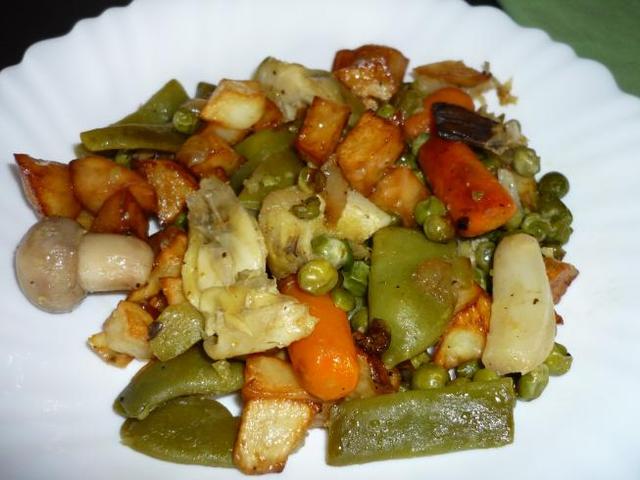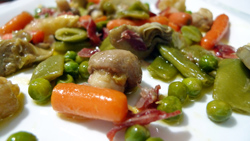
Origin: Spain and other origins

Menestra is one of those dishes that has the rather dubious honour of being one of the most hated dishes by children in the country yet one of the most loved dishes by Spanish mothers. The basic dish is mostly made of boiled vegetables, and Spanish children like so many of their peers in the world, love nothing more than hamburgers or roast chicken and chips. But because it's very healthy, mothers try to feed menestra to their children. It is also a fairly common dish in Spanish schools and Spanish Summer Camps found across the country.
To make it more desirable for children, mothers add to the pan a stir fry of onions and even some chorizo, but for some reason children still seem to prefer being grounded for a whole week instead of eating a spoonful of menestra.
But things change with the passing of time and people begin to appreciate menestra as they grow older, especially when they become emancipated and miss their mother's cooking. Generally Spanish food is very easy to make and menestra is no exception, it's very healthy, season vegetables can be used, as there's no exact recipe and can be prepared at any time of the year, what better?
One of the most popular versions of this dish is the variety that comes from Navarra which is called 'menestra palentina'. This version of the dish is made with bits of lamb and breaded vegetables. In fact menestra palentina is famous right across the North of Spain.
There's hardly a brand of prepared dishes that does not have menestra in its catalogue. So what makes it so popular? One of the factors to be considered is that recently Spain was mainly and agricultural country (and in many areas it still is) and people made do with whatever vegetables they had in their orchards: there's nothing cheaper than eating the vegetables you have grown yourself. Therefore the actual vegetables that you decide to use in your dish aren't important becuase people just use whatever is around at the time. If you pay attention to the vegetables which are in season as well, then this dish can be twice as good for you!
Menestra's origin is a little muddy, Don Quixote's author, Miguel de Cervantes was of the opinion that it derived from the Italian Minestrone and it gained popularity in Spain because of it's simplicity. Others do not agree that it's a version of the Italian soup, however it must be admitted that it's similar in name and composition.
But whatever its origin, menestra is one of those dishes that never goes out of style and people either love it or hate it, but they are never left indifferent! However, don't let this put you off. It is still a very popular dish and is categorically Spanish. For a true and authentic experience of Spanish gastronomy, and especially Spanish home cooking, make sure that you try a plate of menestra!
Another great thing about menestra is that it is perfect for any kind of meal; in Spain you will see it being served as a starter or as a main, and some people have even started serving it as a tapa. So whatever you are planning, you can always count on menestra to be an authentic and wholesome dish for your guests!

Ingredients (4 - 6 portions):
Preparation